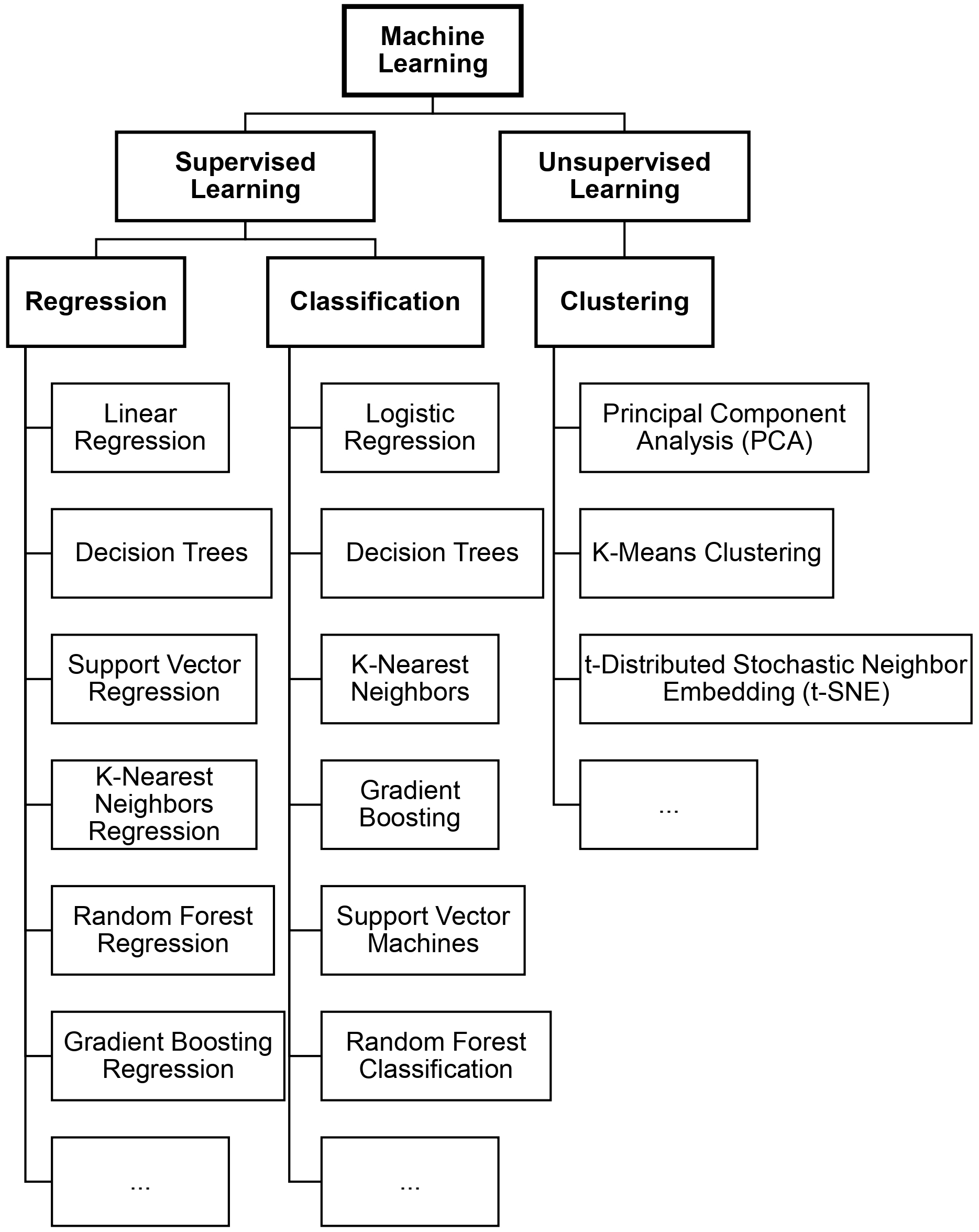9. An Introduction to Machine Learning#
Machine learning acts as a crucial gateway, allowing data science to expand its influence and create meaningful impacts in various fields. It resides at the crossroads of computational and algorithmic skills inherent in data science, along with the statistical thinking needed to understand data patterns. This combination leads to a wide range of techniques for exploring data, identifying patterns, and making statistical predictions, all aimed at extracting valuable insights from vast datasets. These techniques prioritize efficient computation, enabling us to effectively process and analyze complex data.
However, the term “machine learning” is sometimes simplified to the point of creating unrealistic expectations about its capabilities. While machine learning methods are indeed powerful and transformative, they are not a universal solution for all problems. Their effectiveness hinges on a comprehensive grasp of their strengths, limitations, and the fundamental principles guiding their operation.

Fig. 9.1 Illustrative Overview of Machine Learning Techniques.#
To effectively harness machine learning, a nuanced approach is necessary. Key concepts like balancing bias and variance, avoiding overfitting and underfitting, play a vital role in guiding the selection and fine-tuning of machine learning models. A solid understanding of these concepts empowers data scientists to make informed choices, ensuring dependable and accurate results [VanderPlas, 2023].
This chapter delves into the pragmatic facets of machine learning, with a specific emphasis on Python’s versatile Scikit-Learn package. It provides practical illustrations and valuable insights into fundamental machine learning algorithms, all the while recognizing the extensive and continually evolving landscape of this domain. The objective is to stimulate inquisitiveness and furnish a foundational comprehension, thereby motivating readers to explore more specialized domains.
Our exploration of machine learning using Scikit-Learn [Pedregosa et al., 2011, scikit-learn Developers, 2023] acts as a starting point, boosting confidence in utilizing this potent library to tackle real-world issues. Nonetheless, it is imperative to acknowledge this as the initial phase of a compelling expedition into the realm of machine learning. To attain a deeper and more advanced understanding, readers are encouraged to delve into supplementary materials listed in the references.
